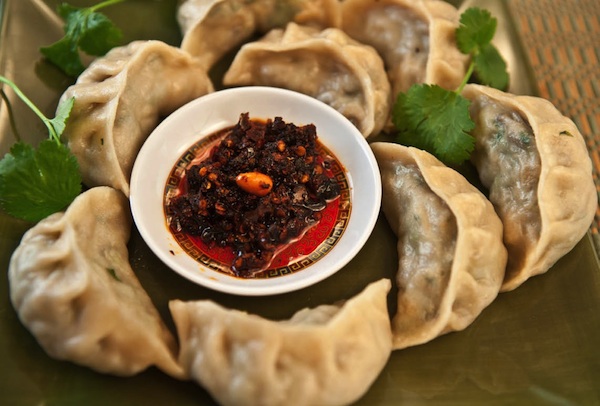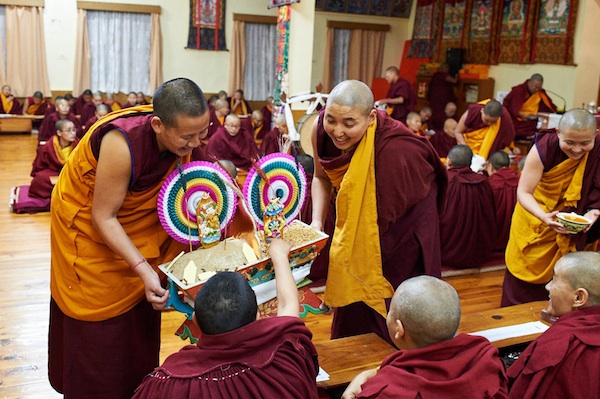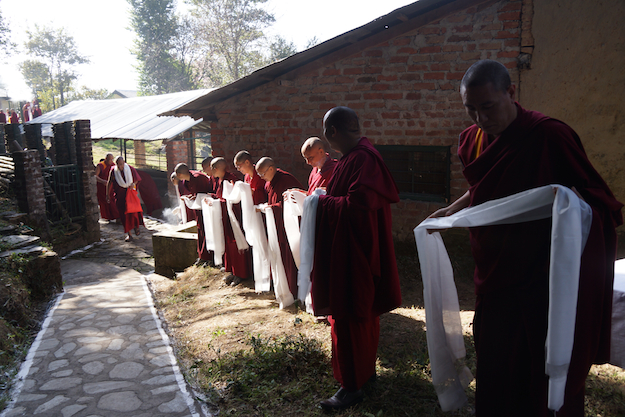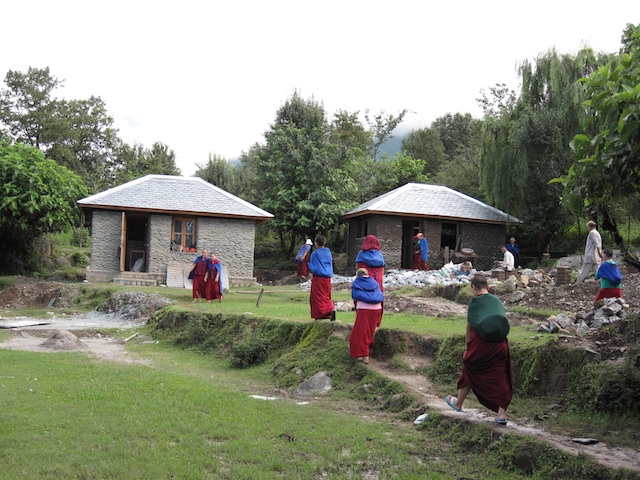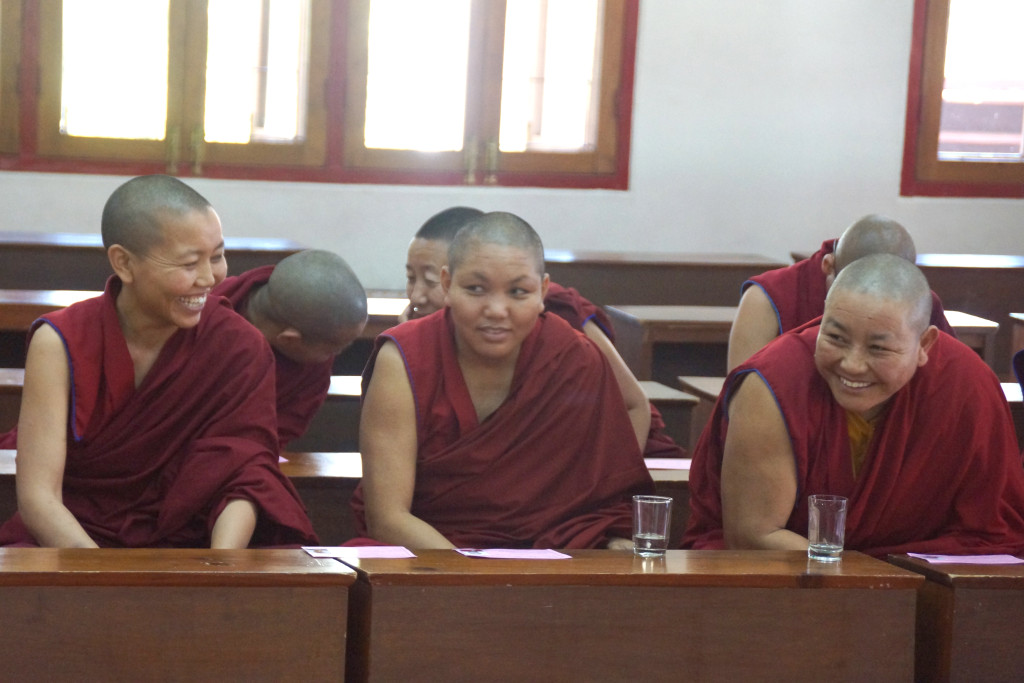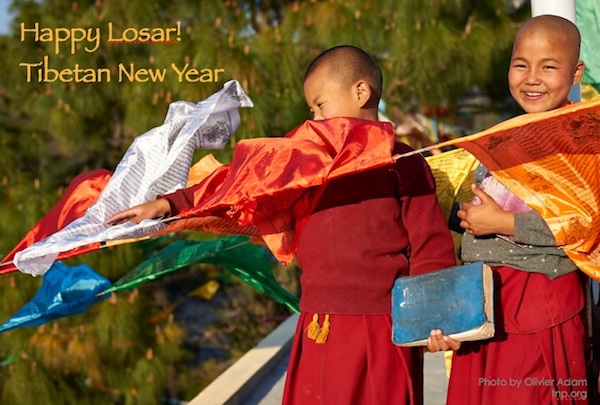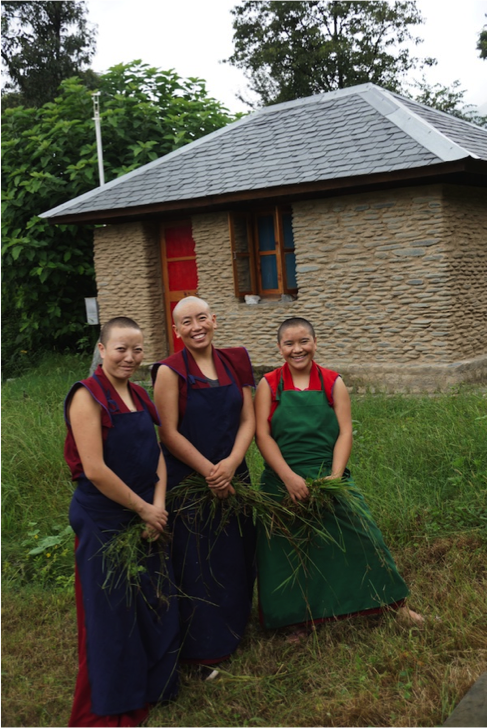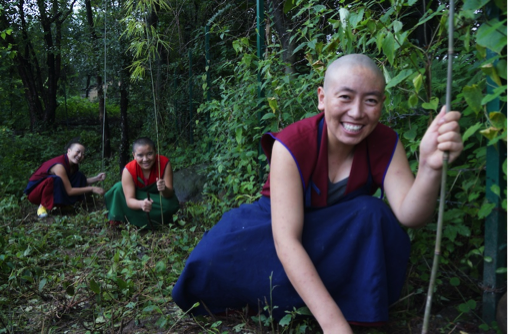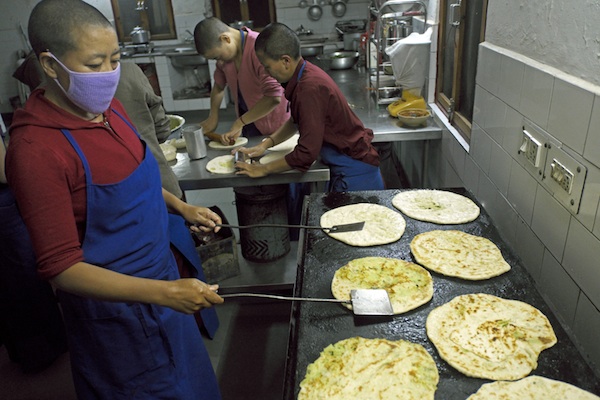Despite the pandemic, the nuns at Sherab Choeling Nunnery have all been well and the academic year has gone smoothly. They recently send these photos and an update on life there. Thank you to everyone who has sponsored a nun at Sherab Choeling! We hope you enjoy this post about daily life at this remote nunnery.
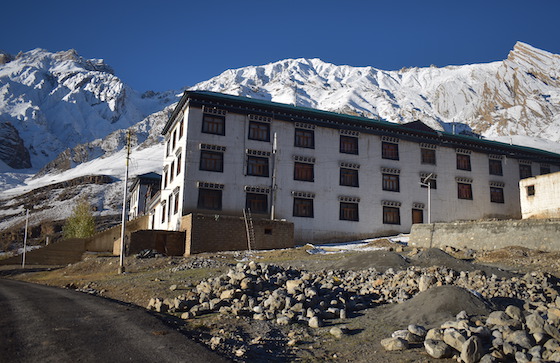
Fresh snow on the mountains above Sherab Choeling Nunnery in Spiti. The nuns took this photo on October 21st, 2021 and it also shows the newly paved road leading up to the nunnery. The road enhancement was done by government.
Sherab Choeling Nunnery in the Spiti Valley of northern India is one of the seven Tibetan Buddhist nunneries supported by the Tibetan Nuns Project. It is a non-sectarian nunnery that recognizes the beauty and value in all Buddhist traditions.
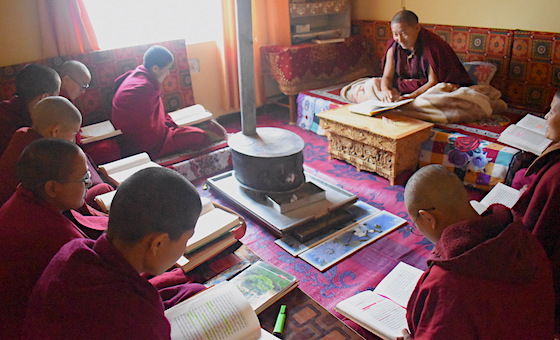
The nuns’ daily routine is to have prayer sessions in the morning, followed by regular classes and internal debate sessions. Nunnery kitchen and cleaning duties are shuffled amongst the nuns.
Currently 62 nuns live there. The youngest nun at the nunnery is around 13 while the eldest nuns are in their 60s.
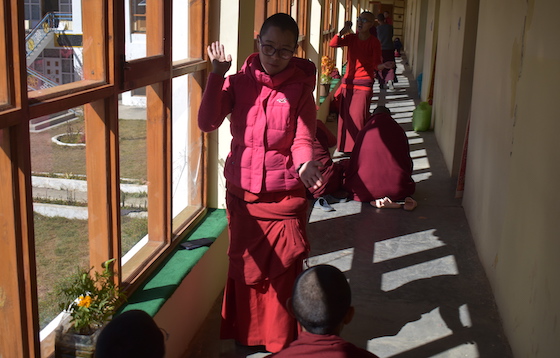
The nuns practice debating in the sun-filled corridor of the nunnery. Learning traditional monastic debate is an essential component of working towards higher academic degrees, such as the Geshema degree, equivalent to a PhD in Tibetan Buddhist philosophy.
The nunnery is very secluded and lies in the village of Morang at 4,000 meters altitude. It was built in 1995 by 20 nuns and their teacher to address the problem of the inadequate education of women in the region.
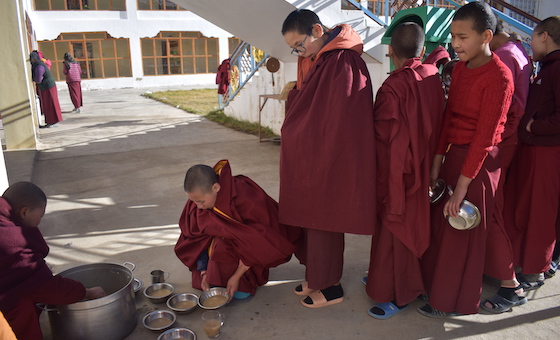
Traditionally women in this region have suffered from many social and educational disadvantages. Many have been deprived of any kind of education, and this institute is the first in Spiti to provide women with the opportunity to overcome these disadvantages.
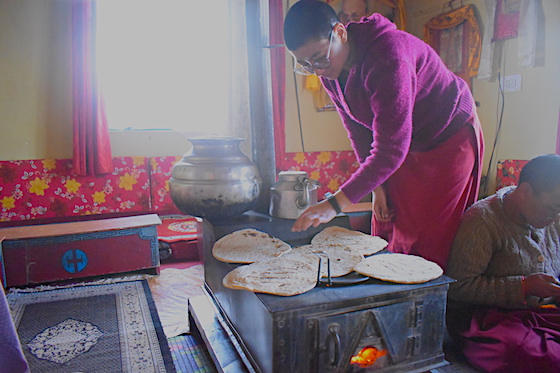
One of the nuns on kitchen duty cooks flatbreads on the stove that also serves to help heat the room. The nuns have a simple vegetarian diet.
Many young girls seek admission to Sherab Choeling, but due to lack of facilities and sponsors, it is not possible for all to gain entrance. The Tibetan Nuns Project helps by raising awareness, finding sponsors for the nuns, and helping them to fundraise for the further development of the institute.
The nuns at follow a 17-year study program. The curriculum is designed to educate the nuns in Buddhist philosophy, meditation, Tibetan language and literature, plus a basic education in English, Hindi, and math. The broad education is intended to provide the nuns with necessary skills to educate future generations of nuns and the communities from which they come.

A Tibetan Buddhist nuns makes what looks like tea and tsampa (roasted barley flour) using an improvised whisk made of thin sticks.
The senior most nuns are in Uma class. The nunnery’s two philosophy teachers have been very encouraging to the nuns and and have been telling them to prepare themselves mentally to achieve the Geshema degree.
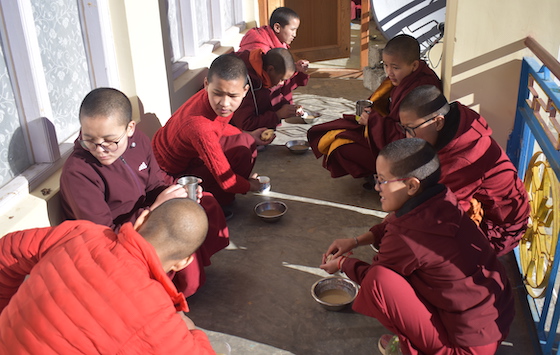
The nuns have a simple vegetarian diet and grow some of their own food. The nuns have three female cows which are cared for by the nuns. They now have three greenhouses and had a good crop this year of radishes and spinach. Since the greenhouses are so successful, two nuns each from Pin Nunnery and Khowang Nunnery came to Sherab Choling to learn how to grow vegetables and take care of the greenhouse.
Also this year, the nuns set up an underground water tank to irrigate their fields. In 2019 there were reports of a water crisis in the Spiti Valley from inadequate snowfall and retreating glaciers. Lakes, ponds, and streams that once helped irrigate fields are drying up.
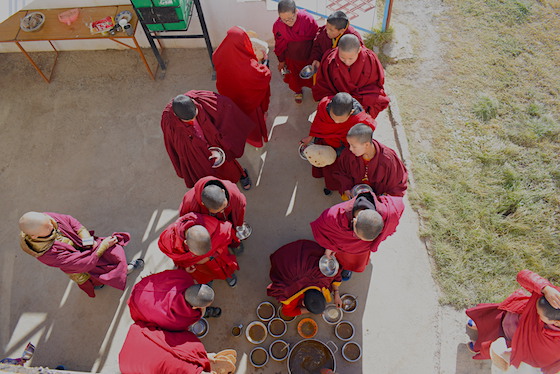
Nuns lining up for a simple meal at Sherab Choeling Nunnery.
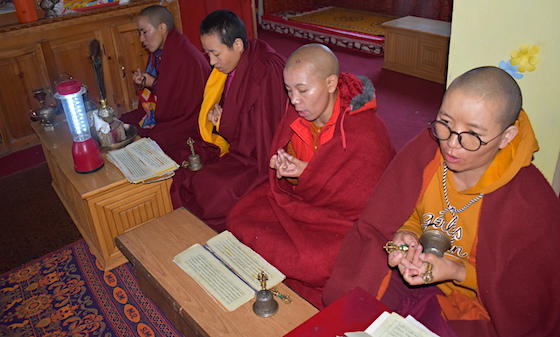
Morning prayers by the light of solar lamps at Sherab Choeling Nunnery. The nuns are making the Mandala Offering Mudra, a complex sacred hand gesture that is a symbolic offering of the entire universe for the benefit of all sentient beings.
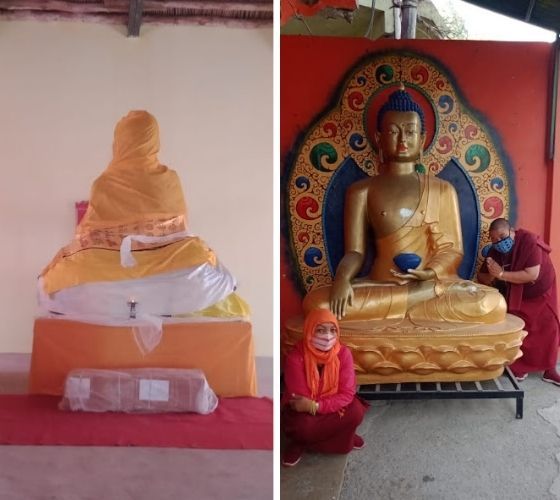
The nuns are very grateful to Shaptung Rinpoche who sponsored the cost of making a seven-foot Lord Buddha statue for Sherab Choeling. It was from Tso Pema and the nuns were able to get it moved to the nunnery in October 2021. The statue is now in the big hall which is being painted and will be used in future as a simple community prayer hall.
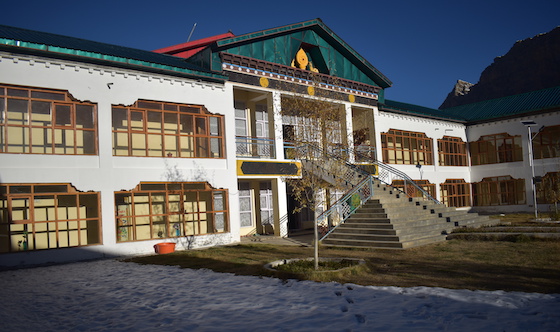
First snowfall this season at Sherab Choeling Nunnery. The photo was taken by the nuns in the early morning on October 21st, 2021.
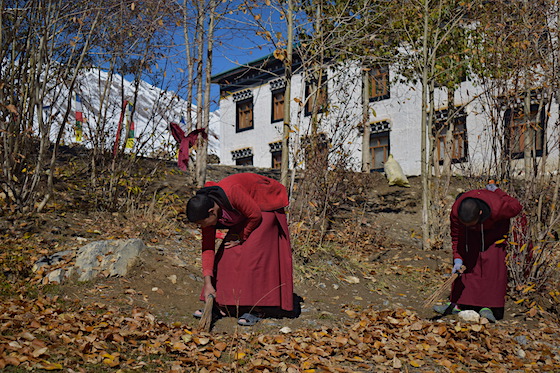
The nuns share chores. Spiti is a cold desert mountain valley located high in the Himalayas in north-eastern part of Himachal Pradesh in northern India. The name “Spiti” means “the middle land”, that is the land between Tibet and India.
If you are interested in seeing more photos of life at Sherab Choeling Nunnery you can see these blog posts:
Slideshows and Updates from all the Tibetan Buddhist Nunneries
Daily Life at Sherab Choeling Nunnery in Spiti Valley India
Life at a remote Tibetan Buddhist Nunnery in Spiti [with photos and audio of chanting]


